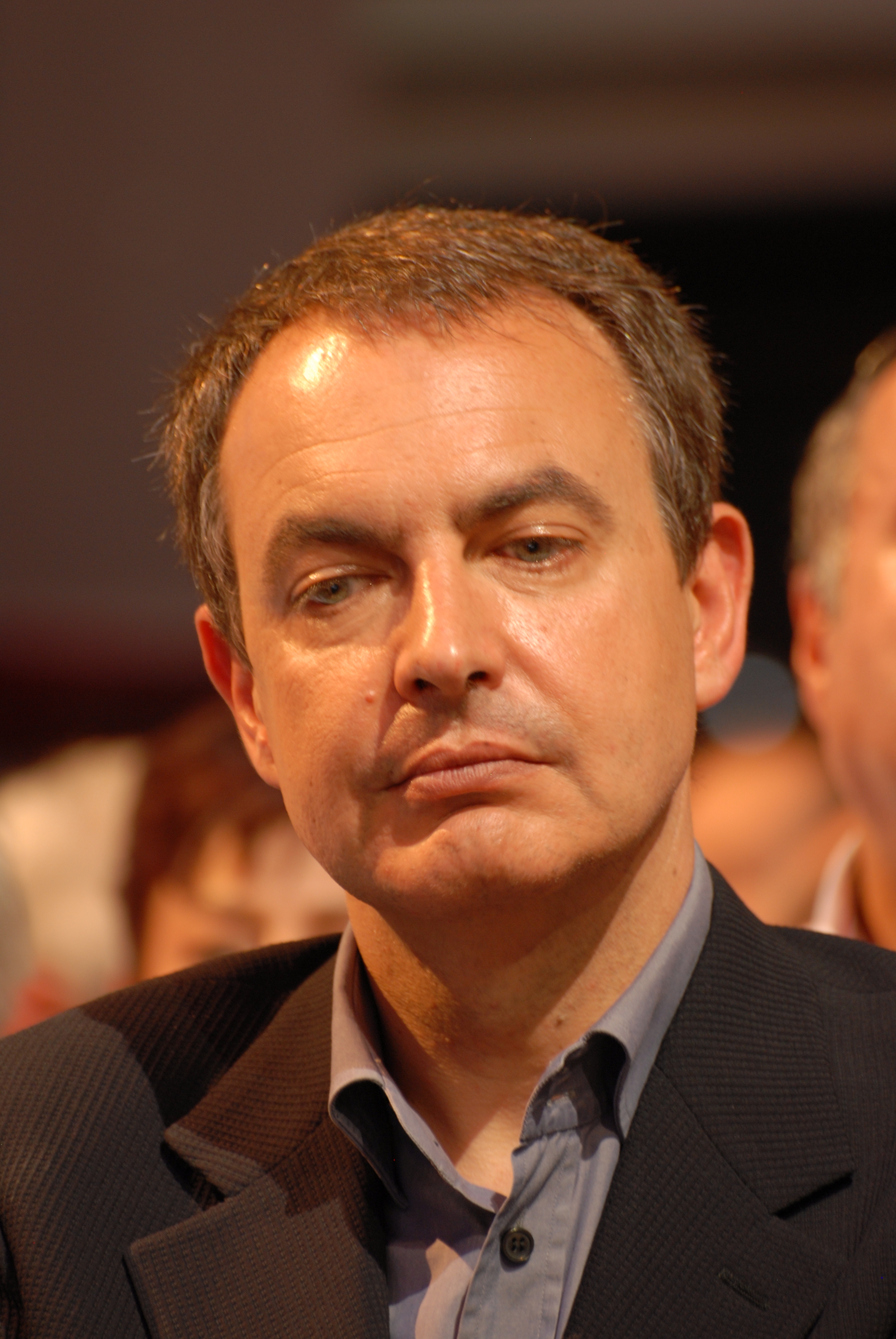- Prime Minister of Spain
Infobox Political post
post = President of the Government
body = Spain
insignia = Escudo de España (mazonado).svg
insigniasize = 100px
insigniacaption = Coat of Arms of the Kingdom of Spain
incumbent =José Luis Rodríguez Zapatero
formation = 1820
inaugural =Francisco de Paula Martinez de la Rosa
website = [http://www.la-moncloa.es www.la-moncloa.es]The Prime Minister of Spain, (officially the President of the Government, Spanish: "Presidente del Gobierno"), is the Spanish
head of government . The prime minister is elected by the Congress of Deputies (the lower house of parliament) on being proposed by the King (this step is a mere formality). The current office is established under the Constitution of 1978. It is presently occupied byJosé Luis Rodríguez Zapatero .Official title
The Spanish head of government is known, in Spanish, as the "Presidente del Gobierno". Literally translated, the title is "President of the Government" or alternatively "Chairman of the Government", ["The Oxford Spanish Dictionary and Grammar", ed. C.Lea "et al.", 2nd ed.(2001)] but nevertheless the office-holder is commonly referred to in English as the "
prime minister ": the usual term for the head of government in aparliamentary system . However the Spanish for 'prime minister' is "primer ministro"; thus, for example, thePrime Minister of the United Kingdom is the "Primer Ministro del Reino Unido", not the "Presidente del Gobierno".In Spain the head of the government is often called simply "Presidente", meaning 'President'. More than once this has caused embarrassing errors among foreign authorities, such as mistaking Spain for a republic. For example
Jeb Bush , theGovernor of Florida , mistakenly referred to the head of government as the "President of the Spanish Republic" during a visit to Spain in 2003 [http://www.cnn.com/2003/WORLD/europe/02/17/jebbush.spain/] .The custom to name the head of government as "President" dates back to the reign of
Isabella II of Spain , when the Prime Minister was called "Presidente del Consejo de Ministros" ("President of the Cabinet"). Before 1833 the figure was known as "Secretario de Estado" ("Secretary of State"), a denomination used today forjunior minister s.Election
The head of government is not directly elected by the people but indirectly elected by the legislature. Legislative elections take place at most every four years, but
snap election s are not unknown in Spain: though unused in the last three terms, ex-PMFelipe González invoked his constitutional right to dissolve the Cortes three times in 1989, 1993 and 1996. Once the new Cortes have been assembled, the Speaker of the Congress of Deputies, the only house whose confidence a candidate must legally acquire, starts a round of contacts with the represented parties in order to find the most viable candidate. This has, as of 2008, always been the leader of the party that won the general election, but there is no legal requirement for this: though it has never happened in the national government, the party winning the election could end up not ruling if its rivals can gather a majority.Once a viable candidate has been found, the Speaker formally requests the King to propose him or her to Congress, and a two-day long
investiture debate takes place in which the candidate can explain his or her government objectives and priorities, followed by two rounds of debate with the parliamentary groups. At the moment of the vote, the House confidence is awarded if the candidate receives a majority of votes in the first poll (currently 176 out of 350 MPs), but if the confidence is not awarded, a second vote is scheduled two days later in which a simple plurality (i.e. more "yes" than "no" votes) is required. Once the candidate has achieved the support of the Congress, the Speaker notifies the King, who officially appoints the candidate as President of the Government. He or she is then free to conform the Cabinet and request the necessary appointments from the King.The role of the Crown in all the process is purely ceremonial, even in the actual steps of appointing the candidate to the office, or appointing members of the Cabined, since all acts of the Spanish monarch must be vetted by the PM himself or, in case of an election or vacancy in the office, the Speaker of the Congress of Deputies. There is no provision whatsoever in the Spanish Constitution or laws for granting any
emergency powers to the monarch, which could be understood as exorcizing the ghost of the recent dictatorship in Spain.Recent Spanish PMs
This is a list of the people who have held the office of Prime Minister since the
Spanish transition to democracy . For the full list since the predecessor office of Secretary of the Universal Bureau was created (1705), seeList of Prime Ministers of Spain .ee also
*
History of Spain
*Politics of Spain
*List of Presidents of the Government (Spain)
*List of Spanish monarchs References
Wikimedia Foundation. 2010.
